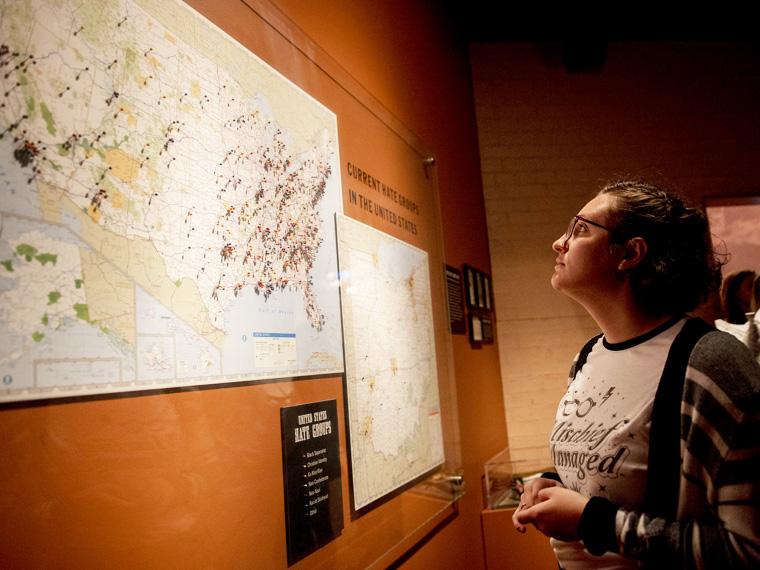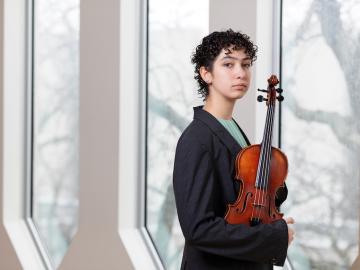History at the Museum Examines How Institutions Educate the Public
January 27, 2020
Hillary Hempstead

Winter Term project explores how various museums choose to construct narratives.
History at the Museum, a project jointly taught by Professor of History Renee Romano and Professor of Comparative American Studies Wendy Kozol, offers students the opportunity to learn about how museums educate the public and construct narratives about the past.
Studies show that the American public considers museums to be one of the most trustworthy sources of historical information. But, say Romano and Kozol, like any historical representation, the past as presented at museums is mediated and shaped by many factors, including the agenda of curators, the political goals of funders, and available historical materials and resources. The pair explain that studying museums is important because the tools that museums provide their visitors shapes not only how they perceive the past but also how they might grapple with the implications for contemporary and future social worlds.
Participants in the project visited a host of institutions, including a local historical center, a presidential home and library, several identity-based museums, and a memorial site. During those trips, they met with curators, directors, and other staff members who offered insights about their museum’s mission and curatorial practices, as well as daily and long-term challenges.
First-year Meredith Warden says her interest in the History at the Museum project stemmed from her understanding that museums frame history to create certain narratives, and that these narratives are often taken as truth. “Because museums have often been perceived as arbiters of truth, challenging that assumption is important,” she says. “Museums are not objective, and, like any other history book, class, or TV show, they create narratives of the past that include some facts and omit or obscure others.”
Warden explains that one of the most striking things she learned in the project was how museums can serve as vehicles of civic engagement by providing commentary on how the past and the present are fundamentally tied together. “Many movements for social justice in the past are still unfinished today or have parallels to different modern struggles, so this idea that museums can be sites of both education and action—rather than just education—is powerful.”
Students who participate in History at the Museum closed their experience with a final project. This year, the students designed part of an exhibit about women alumnae, using the Oberlin College Archives as a resource to locate objects to place in display cases.
“I hadn’t worked with archival materials before, so to actually page through these old documents was fascinating,” says Warden. “It’s amazing that the college saved so many of these records—and they provide such intriguing glimpses into the history of these particular women and of Oberlin itself.”
Tags:
You may also like…
Making a Difference with Business
December 10, 2024
Omukoko Okoth ’25 chose Oberlin College for its values and opportunities, and in order to take advantage of all that Oberlin has to offer, he decided to participate in the business integrative concentration.
Students Create Project That Engages Local Hospital Patients and Nursing Home Residents
June 4, 2024
Oboist Meera Bhatia ’23 and flutist Emily Nixon ’23 visited local hospital and nursing homes over the past academic year, commissioning and premiering a piece by Jeff Scott through the Gletherow-Young-Deppman Project Award.
Violinist Maya Irizarry Lambright to Solo with Oberlin Orchestra
May 9, 2024
A winner of the 2023-24 Senior Concerto Competition, Lambright will open the program with Shulamit Ran's Violin Concerto. The second half of the program features the orchestra in Nikolai Rimsky-Korsakov's Scheherazade.


